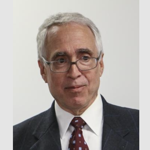A Government Forecast

For inspiration, look at the Watergate scandal. Even before President Richard Nixon resigned, Congress had begun building the deepest inventory of government reform in 50 years. All told, Congress passed 30 major government reform laws from 1974 to 1978, accounting for a fifth of the good government laws enacted over the past half century. The onslaught began with 1974 amendments to the 1966 Freedom of Information Act and the 1971 Campaign Finance Reform Act and the 1976 Government in the Sunshine Act, and it ended with the 1978 Ethics in Government and Civil Service Reform acts. Unable or unwilling to reach agreement on big policy issues such as national health insurance, yet desperately wanting to prove that they could do more than just bicker, Presidents Gerald Ford and Jimmy Carter found common ground with Congress in making government work.
Then, as now, good government was also good politics. Americans were convinced that the federal government was hopelessly inefficient because that's what Democratic and Republican candidates told them in every election. At the same time, Americans wanted more of virtually everything the federal government offered, from bigger Social Security checks to better air traffic control. Convinced that the federal government had the right priorities but the wrong bureaucracy, Americans were inclined to support almost any effort to foster efficiency.
The question today is not whether good government is an idea whose time has come again, but where to begin reforming. Congress and the President could easily spend the next four years untangling a federal organization chart that would make Rube Goldberg proud. Or, they could reform a financial management system that now does a better job losing checks than tracking spending.
Nothing is more important, however, than fixing the campaign finance system and renewing government service. The public service will never make a comeback unless Congress and the President act to remove the persistent stain of soft money. What better way for the nation's leaders to rebuild public trust than by investing in the core competence needed for more efficient government?
The campaign finance system definitely needs fixing. The 2000 presidential and congressional campaigns set new records for money spent and rules bent. According to the Center for Responsive Politics, most House and Senate races were won by the candidate who spent the most money. Democratic New Jersey Senator-elect Jon Corzine obliterated the Senate spending record with a $60 million contribution to himself. In all, the candidates with the most money won 403 of the 431 House races decided by Nov. 15.
The problem is not that money counts, but that unregulated money increasingly counts most. The use of unregulated soft money is rampant, creating the perception that big givers get big rewards. Unlike regulated hard money, which is subject to legal limits, soft money has no caps as long as it goes for broadly defined "party-building activities." Given the size of soft money contributions, such as the hefty $1.1 million contributions from philanthropist Peter Buttenwieser and Slim Fast founder S. Daniel Abraham in 2000, it is little wonder that Americans sense corruption. The distrust associated with soft money affects interest in joining government in two ways. First, it undermines public confidence in government. Convinced that their leaders pay more attention to contributors than the national good, many Americans steadfastly oppose the higher pay, debt relief and greater flexibility needed for a government service that attracts people of high caliber. It is hard enough to recruit public servants under the best of circumstances, let alone when they are bathed in a shameful campaign finance system.
But a new burst of campaign finance reform legislation can't fix all that ails federal service. Pick any level of government and it is hard to imagine a more frustrating or time-consuming process for filling some of the most important jobs in the world than the current system of making political appointments. The problems start at the top of government, where the new administration will be lucky to have its Cabinet and subcabinet in place by Halloween, and continue all the way down to the front lines, where a decade of attrition-driven downsizing has eviscerated government and created a vast middle-level bureaucracy clogged with needless management and underused talent.
Mundane though it might seem, making government service attractive again would reassure the public that government can work. Campaign and political appointment reforms would produce a government more capable of honoring the long list of promises both candidates made during the campaign. That would be a silver lining, indeed.
NEXT STORY: The FAIR Act is still unfair







